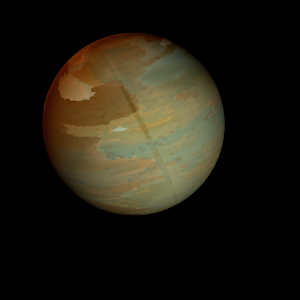|
|
Space Astro
|
Info for exoplanet "Dome"
| Scientific (actual) data |
|---|
| Planet | Kepler-185 c |
| Planet status | Confirmed |
| Radius | 0.18 |
| Orbital period | 20.729 |
| Semi major axis | 0.139 |
| Discovered | 2014 |
| Updated | 2021-02-05 |
| Tconj | 2455020 |
| Impact parameter | 0.57 |
| Publication | Announced on a website |
| Detection type | Primary Transit |
| Alternate names | 2MASS J18495234+4353236 c, K00569.01, KIC 8008206 c, KOI-569 c, KOI-569.01, WISE J184952.35+435323.8 c |
| Star name | Kepler-185 |
| Right ascension | 282.47° |
| Declination | 43.89° |
| Mag j | 13.05 |
| Mag h | 12.587 |
| Mag k | 12.515 |
| Star distance | 473.07 |
| Star metallicity | -0.051 |
| Star mass | 0.79 |
| Star radius | 0.81 |
| Star temperature | 5208 |
| Star alternate names | 2MASS J18495234+4353236, KIC 8008206, KOI-569, WISE J184952.35+435323.8 |
| Wikipedia article | Kepler-185 c |
Back
| |
| Fictional info (?) |
|---|
| Suggested name | Dome |
| Planet type | Planet |
| Dome has been known to astronomers since the beginning of the space age. This planet is named after the deity Dome, the god of prosperity.
Dome's surface appears heavily rippled and is similar in appearance to the Moon's, indicating that it has been geologically inactive for billions of years.
Dome is a planet and is sometimes called Earth's "twin planet" because of their similar size, mass, proximity to Kepler-185, and bulk composition. It is radically different from Earth in other respects.
The volume of water detected has been estimated to be equivalent to the volume of water in Earth's oceans.
Dome can easily be seen from Lassa with the naked eye, as can its blackish coloring. |
| Atmosphere | Ammonia | 85% |
| Methane | 11% |
| Carbonyl sulfide | 2.9% |
| Ethane | 0.44% |
| Ozone | 0.0095% |
| Carbon monoxide | 0.0056% |
| Atmospheric pressure | 4 bar |
 |
| No known satellites |
| Google search for Dome |
|
Website by Joachim Michaelis
|
|
|
|